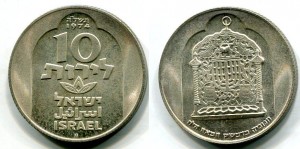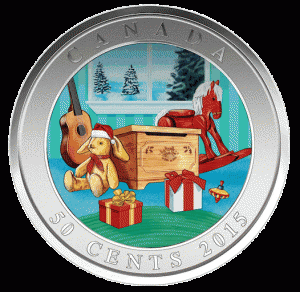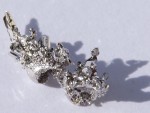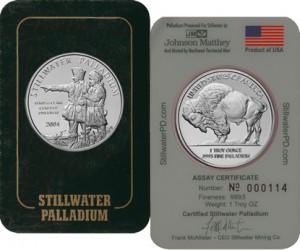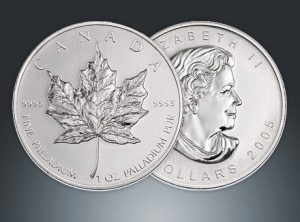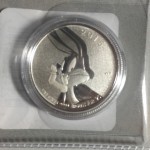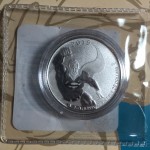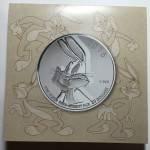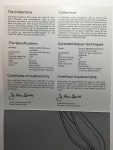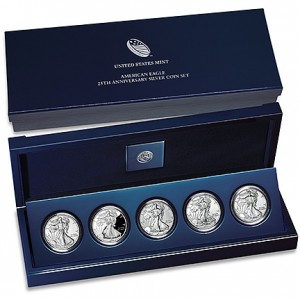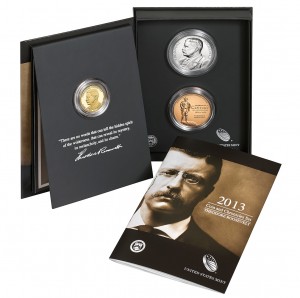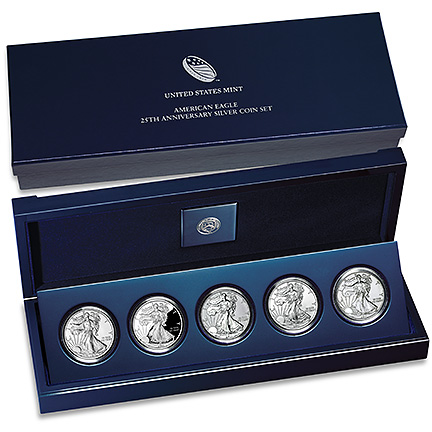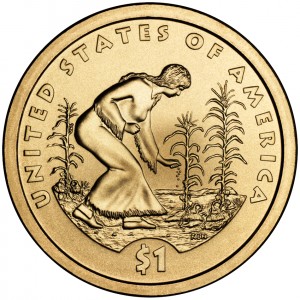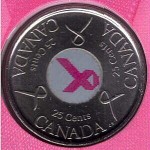Palladium arcadium
Our final saga of How the Congress Turns (our stomachs), we will finish looking at the technical changes added to the “Fixing America’s Surface Transportation Act” or the “FAST Act” (H.R. 22) will impact collectors. Back to Title LXXIII, Section 73001 we find:
Remembering that technical changes instructs the Office of the Law Revision Counsel how to correct the law, to understand this change we have to look at the law (31 U.S.C. § 5112(v)) to find that this is a correction to the law about minting palladium bullion coins.
The American Eagle Palladium Bullion Coin Act (Pub. L. 111-303) originally requested that the secretary study the feasibility of striking palladium coins and mint them if the study shows a market demand. Although the study showed that there is a market, it was not overwhelming. Based on the wording of the law, the U.S. Mint opted not to strike palladium coins.The very first edit is to take away the wording that says to do the study and strike if there is a market to saying that palladium coins will be struck using as much palladium as can be found from United States sources. If there is a higher demand, the U.S. Mint can use sources outside of the U.S. to purchase palladium.
Finally, the last correction not only requires the U.S. Mint to strike palladium bullion coins but to also create collector versions.
- 2004 Stillwater Palladium Rounds
- 2005 Canada Palladium Maple Leaf
Palladium is a soft silvery metal like platinum. It is lighter than platinum (atomic number 46 versus 78) and similar to silver (atomic number 47). It has similar uses as silver including in electronics, compounded catalysts, jewelry, and coins. Palladium commands a higher price than silver because it is less available but less expensive than platinum, which is more difficult to mine.
The primary source of palladium in the United States is the Stillwater Mine in Montana. The mines, which also provides the U.S. supply of platinum group metals (PGM), is owned and operated by the Stillwater Mining Company. The American Eagle Palladium Bullion Coin Act was introduced by Rep. Dennis “Denny” Rehberg (R), Montana’s only member in the House of Representatives.
The final entry will discuss how the transportation bill and bad timing will affect American Silver Eagle collectors.
Other images courtesy of the Northwest Territory Mint.
Now with more silver
 In our short saga of How the Congress Turns (our stomachs), we are going to look at the next and last provision of how the “Fixing America’s Surface Transportation Act” or the “FAST Act” (H.R. 22) will impact collectors. Returning to Title LXXIII, Section 73001 we find:
In our short saga of How the Congress Turns (our stomachs), we are going to look at the next and last provision of how the “Fixing America’s Surface Transportation Act” or the “FAST Act” (H.R. 22) will impact collectors. Returning to Title LXXIII, Section 73001 we find:
The result of the corrections is to change the requirement to strike silver coins with a composition that contains 90-percent silver, to the requirement that the coins must contain at a minimum 90-percent silver. By making these changes, it allows the U.S. Mint to use pure silver planchets to strike coins.
The U.S. Mint has been asking congress to end the practice of requiring silver coins to be 90-percent silver. Earlier, it was learned that pure silver planchets would be cheaper to produce than to find the few suppliers who would create “dirtied” blanks.
Congress finally listened (for a change).
 The change in the law happens in two parts. Paragraph (B) makes the change for the balance of the America the Beautiful Quarters Program including the 5-ounce bullion coin. Section (2) changes the Administrative part of the code (31 U.S.C. § 5132(a)(2)(B)(i)) that covers all other coins. A problem with the way these corrections were written it does not affect commemorative coin programs unless the U.S. Mint’s general counsel feels that this law covers all coins. While the U.S. Mint is likely to interpret the law the way that benefits them, the wording does not cover commemoratives.
The change in the law happens in two parts. Paragraph (B) makes the change for the balance of the America the Beautiful Quarters Program including the 5-ounce bullion coin. Section (2) changes the Administrative part of the code (31 U.S.C. § 5132(a)(2)(B)(i)) that covers all other coins. A problem with the way these corrections were written it does not affect commemorative coin programs unless the U.S. Mint’s general counsel feels that this law covers all coins. While the U.S. Mint is likely to interpret the law the way that benefits them, the wording does not cover commemoratives.
Missing from these corrections the similar language for gold coins. Unless the U.S. Mint will interpret the gold coin changes as permission to change the commemorative coin programs, gold coins will remain 90-percent gold.
As I write this I am reminded about famous quote by the first Chancellor of Germany Otto von Bismarck: “Laws, like sausages, cease to inspire respect in proportion as we know how they are made.”
Next, we introduce another collectible that congress has mandated to be produced by the U.S. Mint.
Transportation drives numismatic changes
Over the last few years, congress has had this habit of waiting to the last minute to vote on legislation. When they do, they load up this legislation with seemingly unrelated stuff that it is no wonder their ratings are in the single digits.
Let’s take the recent so-called transportation bill. In a stunning 490 pages, which only two-thirds are devoted to transportation issues, congress passed The “Fixing America’s Surface Transportation Act” or the “FAST Act” (H.R. 22). While a transportation bill may not be that interesting to most collectors, buried down in Title LXXIII is the “Bullion and Collectible Coin Production Efficiency and Cost Savings” section.Title LXXIII of what is now Public Law 114-94 is short but has a big impact on the future for collectors. Rather than try to digest it all here, I will spend the next few days discussing the impacts. Starting with the technical corrections as part of Section 73001.
Technical corrections to a law is the process where congress votes on the wording changes that either clarifies or changes the limits of a law. It is written in a way that tells theOffice of the Law Revision Counsel, the editor of the United States Code (federal law), how to correct the law. In the case of the these corrections, it is instructing the Law Revision Counsel to edit the law (31 U.S.C. § 5112) that defines all the specification for U.S. coinage.
Today we begin with:
Removing the CFA and CCAC from design decisions may be a good idea when producing coins based on classic design. However, if the U.S. Mint abuses this provision, there is no doubt that congress will yell, scream, call the U.S. Mint bad names, and put the provision back in the law.
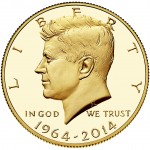 The change also removes any limits on mintages of 24-karat gold bullion coins allowing the U.S. Mint to produce as many to meet market demands. It will also allow the U.S. Mint to limit mintages on 24-karat gold bullion coins without asking for permission. This change just codifies current practice.
The change also removes any limits on mintages of 24-karat gold bullion coins allowing the U.S. Mint to produce as many to meet market demands. It will also allow the U.S. Mint to limit mintages on 24-karat gold bullion coins without asking for permission. This change just codifies current practice.
This first correction also removes paragraph (8) that requires protective covering, such as capsules for the coins. This will allow the U.S. Mint to package these coins for bulk sale as bullion coins adding to the potential for higher sales of gold coins. Although there has been no comment from the U.S. Mint, it is doubtful that they would sell collector versions of these coins in substandard packaging. That has not been their policy.
All that from just a few lines. Stay tuned because tomorrow we learn that congress actually did something right, for a change!
Look… up in the sky! What’s up doc?
Back in October I wrote about the Royal Canadian Mint’s “$20 for $20” series of .9999 pure silver coins being sold with a face value of $20.00 in Canadian funds. A few weeks after that post I bought the Bugs Bunny and Superman silver coins.Even though both coins were ordered at the same time, they were shipped separately. Packaged in plain envelopes with a nondescript United States address, the Bugs Bunny coin arrived four weeks later and the Superman coin arrived 10 days later. It appears like the Royal Canadian Mint is either mailing them from the United States or using a fulfillment center to do the mailing. In either case, shipping was free!
Coins are placed in a plastic capsule, which I hope is archival safe, with that capsule placed in a clear plastic envelope. The envelop is “sealed” with a sticker and then glued to the card. The card has the information about the coin in both English and French. All of the extra paperwork was added to the Superman coin, but that was inconsequential to the presentation.
Both coins are a little bigger than the U.S. quarter dollar. The quarter is 24.26 millimeters and the Canadian $20 coins are 27 millimeters. While the U.S. quarter contains 5.670 grams of a copper-nickel alloy, the Canadian $20 coins contain 7.96 grams of silver. At the current exchange rate (1 USD = 1.393 CAD), the coin’s face value is equivalent to 14.3584 USD. With the current silver value of $14.16, the melt value of these coins are $3.62.Before you go unleash yourself on the costs, remember that the $10.74 “markup” also includes manufacturing and packaging costs, shipping, and license fees the Royal Canadian Mint has to pay to Warner Brothers.
Growing up watching Bugs Bunny on television on the weekends and the reruns of the The Adventures of Superman after school starring George Reeves makes these a special collectible.
These are also struck coins without color enhancements. Although the texture is similar to that of the U.S. Mint’s enhanced uncirculated coins, as sculptured works of art, they are very accurate images and beautifully made.
It may be too late to buy these for a holiday present, unless you put an “I.O.U.” in the box. Maybe if you are near the Royal Canadian Mint facility in Ottawa you can check out their physical storefront. You may want to call ahead before making the trip expecting to find these coins.
Packaging Images
- Front Cover
- Inside Cover
- Coin attached inside
- Back Cover
- Cover with the 2015 $20 Canada Superman coin
- Inside Cover
- Coin attached inside
- Back Cover
U.S. Mint to save some trees
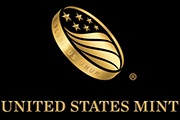 With the growing importance of electronic commerce especially for new products that sell out online with greater efficiency than even telephone order, the U.S. Mint has announced that it will be discontinuing all mail order processing at the end of the current fiscal year, on September 30, 2016.
With the growing importance of electronic commerce especially for new products that sell out online with greater efficiency than even telephone order, the U.S. Mint has announced that it will be discontinuing all mail order processing at the end of the current fiscal year, on September 30, 2016.
According to the statement released by the U.S. Mint, “The reality of the digital environment means that paper orders placed through the mail are increasingly not accepted as inventory is depleted quickly through online and telephone channels in real time. This is especially true for high-demand products with limited mintages. By eliminating mail orders and encouraging all customers to shop online or by phone, the Mint will be offering more ordering consistency and eliminating those hard copy orders that take longer to receive, process and fulfill.”
While existing order forms will be accepted until the deadline, catalogs and other U.S. Mint advertising material will no longer include paper order forms. Order forms received after September 30, 2016 will be returned with instructions to place the order using the online catalog or by calling (800) USA-MINT (872-6468).
There will be some people upset by this move, but considering the direction of online retail services and the reduction in cost to serve the broader market, the few people that might feel they are being excluded will be inconsequential. Dealers and the secondary market will pick up the business the U.S. Mint is expected to lose.
As with any change, the U.S. Mint will not make everyone happy. Some may point out the previous failures in their online ordering process while others might even say that telephone ordering should also be reduced without realizing that the U.S. Mint’s customer service representatives use a similar version of the website to place an order.
For those who use smartphones, the U.S. Mint does have an app that can be used to place orders. I have used the app (and should write a review) but it might be better to ignore the app and directly use the website.
Summary of November 2015 Legislation
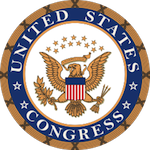 I know that there is little the U.S. Mint can do without congress’s permission, but sometimes sifting through what congress is doing can be tiresome. There is so much good that congress can do but the political in-fighting is so insidious that all one can do is shake their head in disgust. At least there is one interesting item to report:
I know that there is little the U.S. Mint can do without congress’s permission, but sometimes sifting through what congress is doing can be tiresome. There is so much good that congress can do but the political in-fighting is so insidious that all one can do is shake their head in disgust. At least there is one interesting item to report:
H.R. 22: Developing a Reliable and Innovative Vision for the Economy Act
- SEC. 73002. AMERICAN EAGLE SILVER BULLION 30TH ANNIVERSARY: Proof and uncirculated versions of ASE coins during 2016 shall have a smooth edge incused with a designation that notes the 30th anniversary of the first issue of coins.
Track this bill at https://www.govtrack.us/congress/bills/114/hr22
In other words, congress is mandating a 30th Anniversary American Silver Eagle set. I wonder if it will match the 25th Anniversary set?
POLL: What are your gift plans?
Before it became a thing, Black Friday is the day after Thanksgiving that is usually the biggest shopping day of the year and where retailers become profitable for the year, or being in the black. When online sales began to pick up and most people were connected to the Internet by slow connections, usually by a modem, people would go their offices on Monday and use the company’s faster Internet to place their online orders. In 2005, the National Retail Federation started calling it Cyber Monday.The meaning of Black Friday and Cyber Monday has been dulled over the last few years except as an alleged barometer for the shopping season it is still something that becomes an event where the worst behaviors can be seen on the evening news. In 2013, the U.S. Mint did their part in the Black Friday hype by offering free standard shipping for the first week of the holiday shopping season.
All this means that it is the time for gift giving and gift receiving. While we are searching for the holiday deals, what is on your wish list this year? If you want to provide details, add it to the comments below!
What are your 2015 gift plans?
Total Voters: 43
Happy Thanksgiving 2015
Thanksgiving was first celebrated in 1621 by the Dutch settlers at Plymouth, Massachusetts to celebrate a successful harvest. It was a tradition that the Pilgrims brought with them from Europe. The three-day event was attended by 53 Pilgrims and 90 Native Americans that lasted three days. The tradition of giving thanks for successes was a tradition that the Pilgrims brought with them from England. This three-day celebration in 1621 is considered the first Thanksgiving.
After the birth of the United States, President George Washington issued a proclamation honoring the Thanksgiving harvest during his presidency. The only other president to issue a Thanksgiving proclamation was President James Madison. From then, it was up to the individual states to declare a Thanksgiving holiday.
Writer and editor Sarah Josepha Hale found a diary from the time of the Pilgrims and was moved to write editorials to bring back the Thanksgiving celebration. As part of her efforts, Hale developed recipes for roasted turkey, pumpkin pie, and stuffing that are part of the inspiration for today’s Thanksgiving feast. President Abraham Lincoln was so moved by Hale’s efforts that he decided that it was a good idea to maintain the union he issued a proclamation that made Thanksgiving Day a national holiday in 1863.
After Lincoln’s proclamation, it was traditional to celebrate Thanksgiving on the last Thursday of November. In a move to increase the holiday shopping period to promote more spending, President Franklin D. Roosevelt pushed to have congress pass a law to move Thanksgiving earlier in the month. In December 1941, Roosevelt signed a bill that set Thanksgiving as the fourth Thursday in November.
Congress is not a cure
While reviewing my notes I noticed that I had this draft in my queue. Although drafted in July, I think the topic is still relevant.
In 2009, I wrote a six-part series “Reforming America’s Currency” out of frustration with how behind the United States is in its currency production process (not economic policy) as compared with the rest of the world. After all, the U.S. Mint and the Bureau of Engraving and Printing are the largest money manufacturers in the world. In Part 4, I wrote that the “first reform in commemorative coinage would be that no commemorative would be struck for the sole purpose of raising money for any organization. Regardless of how worthy the organization may be, the association of the commemorative with fundraising taints the process.”
Nearly six years later congress presents us with a clear example of why fundraising must be eliminated from the process with the debate over the Breast Cancer Awareness Commemorative Coin Act (H.R. 2722).In an astounding partisan move, some members of congress have chosen to display their political umbrage to try to derail a commemorative coin that has bipartisan support.
If you are not aware, the original version of H.R. 2722 would have given the proceeds to the Susan G. Komen for the Cure and the Breast Cancer Research Foundation. The argument was whether money raised by the commemorative should go to Komen. As a not-for-profit charitable corporation, Komen supports education and research to fight breast cancer. The organization, founded in 1983, has been one of the more successful organizations in education and providing research funds in the fight against breast cancer.
Komen is not without controversy. Most have been within the last 10 years when the organization has grown to such size and scope that some feel it may be more corporate driven than focused on its original mission. One of its controversies is its association with Planned Parenthood. Komen, who gives grants to organization for women cancer screenings, had been proving grants to Planned Parenthood earmarked for cancer screenings. Since Planned Parenthood has also had its share of controversies, social conservatives balked at the association.
More recently, Planned Parenthood has been accused of unethical practices regarding their medical-related practices. A video surfaced that claims someone at Planned Parenthood would be selling fetal tissue following abortions. It was a hidden camera video whose contents have not been verified. Although the video has some disturbing conversations, it is unknown whether this is an isolated incident or a policy followed by some.
Because of the politics surrounding the abortion issue, the policies of Planned Parenthood, and Komen’s support of Planned Parenthood’s cancer screening programs, Komen was open to attack by right wing demagogues looking to score political points rather by using the concept of guilt by association rather than rational thinking.
In order to deal with these chest-thumping yahoos, all of whom are white men living in their own glass houses, the bill had to be amended to remove Komen from the organization receiving the money. Rather, all of the proceeds will go only to the Breast Cancer Research Foundation.Komen may have its controversies but the debate on this issue is beyond the pale. Their mission is for education and cancer research. Their mission should be as non-partisan as anything in this country. Cancer does not discriminate. Cancer will attack anyone at any time for any reason regardless of affiliation outside of being a sentient being.
To bring any other issue into the discussion, regardless of where you fall on the political spectrum, shows congress’s immaturity and that the basic function of raising money using commemorative coins should be discontinued immediately.
Some will be upset over my discussion of politics, but politics are part of the coin making process since the U.S. Mint cannot do much without permission. I also both sides of the issue, but for this debate, I do not care. When you have to go three-degrees of separation to dig up an issue in an unrelated political debate, it gets frustrating. It is yet another illustrations as to why I am against using commemorative coins to raise money for any cause regardless of how I feel about the cause—and I have personal reasons for being in favor of cancer research and education. This debate should have NEVER devolved into a discussion about abortion. The fact that it did stoop to those depths proves that congress needs to get out of the commemorative coin business. It will be one less area they can mess up.
